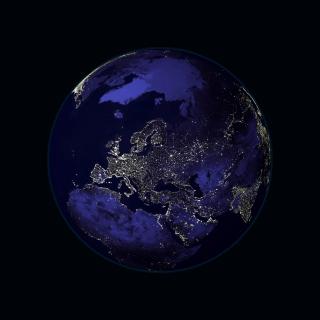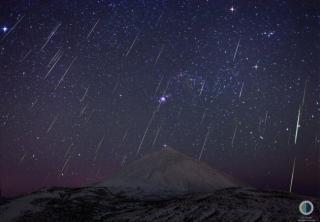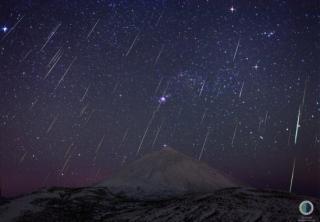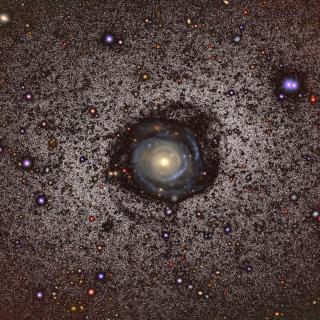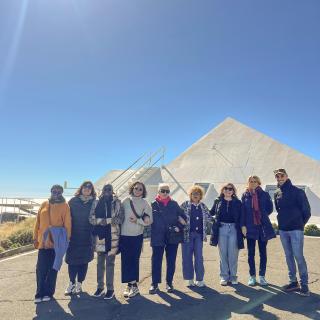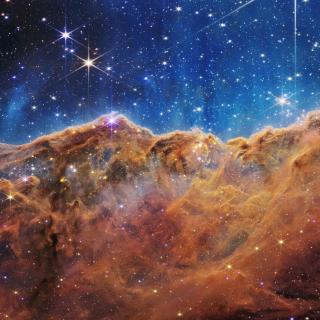On May 5th the Earth will pass through the cloud of dust and small fragments of rock which comet 1P/Halley left behind during one of its approaches to the Sun, giving rise to the meteors known as the Eta Aquariids. The sky-liv.tv channel, in collaboration with the Energy Efficiency Laboratories (EELabs) project coordinated by the Instituto de Astrofísica de Canarias (IAC), will broadcast this meteor shower as part of its activities in “Sounds of the Sky, a Citizen Science project of the FECYT to involve the whole family in classifying meteors, and also to make this task easier for visually handicapped people.
Meteor showers are major sky spectacles produced by the collision of tiny fragments of comets or asteroids with the atmosphere of our planet. The most popular are the Perseids, in August, the Geminids, in December and the Quandrantids, in January, but around the year there are some 40 of these meteor showers which are analyzed for continuous study of our Solar System, The aim of the “Sounds of the Sky” project, funded by the Spanish Foundation for Science and Technology (FECYT),is to use
Citizen Science to improve our knowledge about these minor bodies, classifying them on the basis of certain general characteristics, and looking for patterns of similarity between them.
Motivated by the meteor shower of the Eta Aquariids, which produces its peak of activity every year between 19th April and 28th May, on May 5th the Citizen Science Project “Sounds of the Sky” has organized a number of activities and talks, which will culminate with the broadcast of this astronomical event from the Teide Observatory via the sky-live.tv channel in the early hours of 6th May at 4.45 UT ( which is 5.54 local time in the Canaries and 6.45 in Peninsular Spain)
Multidisciplinary team
In this project a multidisciplinary team formed by engineers of the Polytechnic University of Madrid, astronomers from the Instituto de Astrofísica de Canarias, teachers from the Community of Madrid, and amateurs from the Astronomy Group of Madrid South, have come together to perform this research, and also to bring citizen science and astronomy to society.
Innovative infrastructure
The “Sounds of the Sky” project has a network of stations for detecting meteors by radar, a novel technique for studying these objects (often called shooting stars). One of the advantages of detection by radar is that it permits the detection of the meteor echos during the day, even if it is cloudy or raining, conditions which are obviously unfavorable for making visual observations of this phenomenon, but which even today are still the most usual way of studying meteors. The project team has developed the software for transforming the echos into artificial sounds and to present them in different formats for classification.
The most traditional version of the experiment can be found in web format integrated as a project within the popular platform of citizen science Zooniverse
https://www.zooniverse.org/projects/cslab-upm/sky-sounds/
Chatbots
The most innovative version of the project is based on the use of artificial intelligence via the development of chatbots. These make their presence increasingly felt in our society, and in the applications we use, normally interacting with users to resolve doubts by text or voice. However Sounds of the Sky uses them as tools to make Citizen Science more accessible
Within the project the chatbots will allow blind people or those with seeing difficulties to participate in the project, because they will be able to listen and classify the meteors by following a voice conversation.
A chatbot has also been designed to make the experiment more accessible and attractive to children, without their being able to read or write. The application is quantified and badges will be obtained according to the number of classifications made. In this agreeable way, talking to a machine which understands them, we think that children will be drawn closer to the ambit of science.
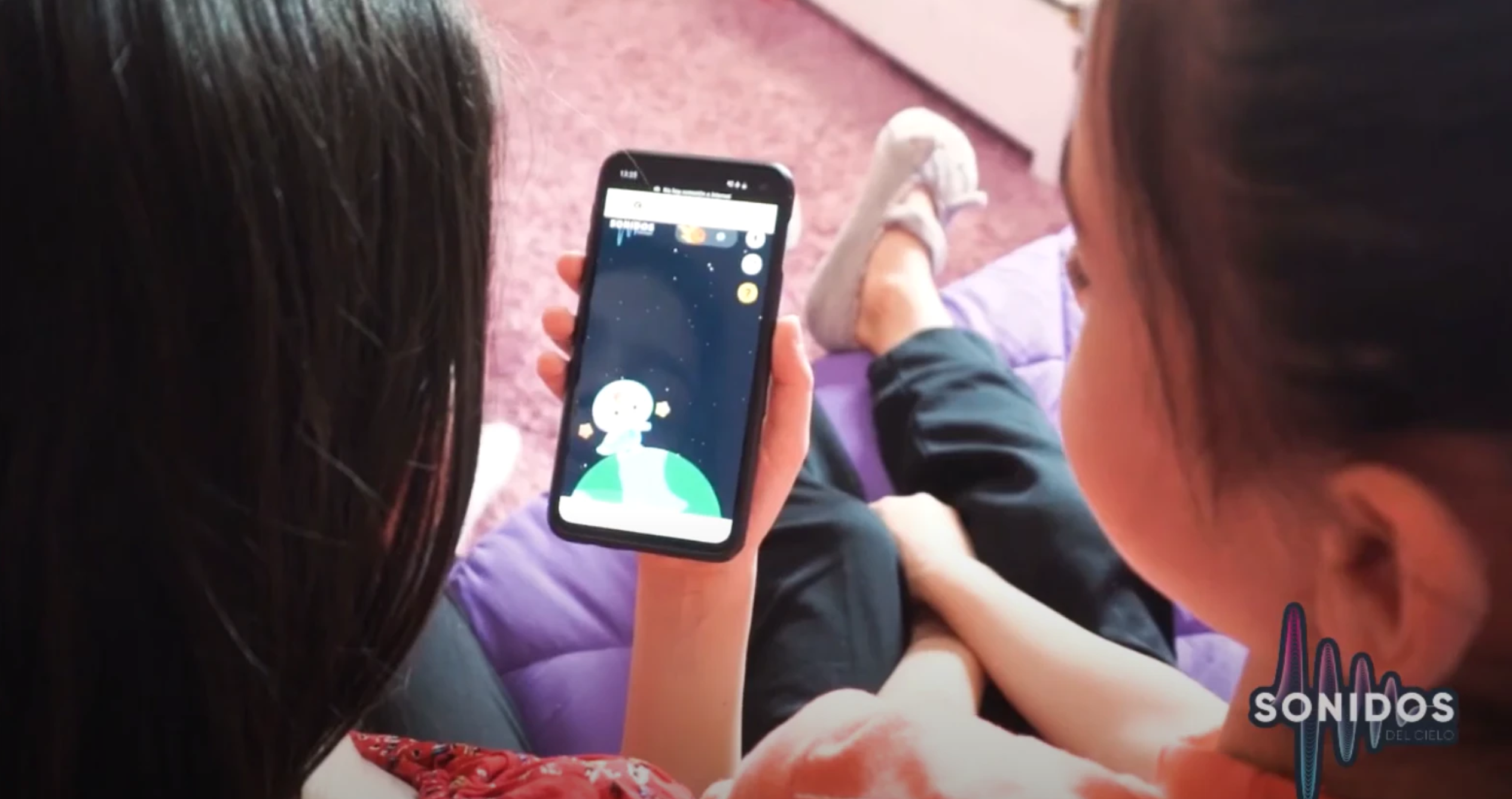
Listening to meteor showers. Accessible astronomy
During the live event we have the offer of collaboration by Enrique Pérez Montero, Scientific Researcher at the CSIC, and one of the most active popularizers of inclusive astronomy in our country. He will present the initiative “The Universe in words” which gives audio descriptions of images of astronomical objects.
An educational workshop for children in the Fuenlabrada Astronomy Classroom
The Fuenlabrada Astronomy Classroom is a public educational resource devoted to teaching astronomy in a school environment since school year 199u8/1999. It arose from a collaboration between the Education Department of the Community of Madrid with the Education Department of the City Council of Fuenlabrada, and the teachers of the Kepler Group. It receives more than 22,000 visits during a given school year. During this year a workshop for children has been designed so that they can learn more about the phenomenon of meteor showers and participation in citizen science projects is being encouraged. The FECYT has funded the purchase of tablets and earphones to give the Classroom what is needed to carry out this activity. The tutorial video which will be presented to the children during the visit is now available on Youtube.
Eta-Aquarids: Live from the Teide Observatory
The Eta-Aquariids meteor shower have their origin in the small fragments (called meteoroids) detached from the famous comet 1P/Halley, which revolves around the Sun every 76 years and whose last passage near the Earth was in 1986. Because the point in the sky where the meteors appear to be "born" (the radiant) is located in the constellation Aquarius, observers in the Southern Hemisphere will enjoy the greatest number of meteors or shooting stars. For the northern hemisphere the best time to observe the shower will be before dawn, when the radiant will be above the horizon. That is why, in the early morning of 6 May, at dawn, the sky-live.tv channel, as part of the dissemination initiatives of the European project EELabs (eelabs.eu), will broadcast live the star shower from the Teide Observatory (IAC, Tenerife, Canary Islands).
The event will take place next Wednesday, 6 May, at 04:45 UT (5:45 local time) (6:45 CEST).
Information about the event and the programme
Wednesday 5th May at 17:00h
The event will we transmitted by Zoom and will allow interaction between the public and the presenters.
In the fist place there will be a general presentation of the project and afterwards there will be two parallel sessions:
Escape Room “2029, Let’s save the Earth from the asteroid Apophis” for the youngest children in the house enjoy a day of astronomy
Workshop for visually handicapped people
You need to inscribe previously (free) via the following link http://eventos.upm.es/go/sonidos-del-cielo
This project is funded by FECYT.
Project website: http://sonidosdelcielo.org/
EELabs (eelabs.eu) is a project funded by the Program INTERREG V-A MAC 2014-2020, co-financed by the FEDER (European Fund for Regional Development) of the European Union, under contract number MAC2/4.6d/238, Within EELabs there are five centres in Macaronesia (IAC, ITER, UPGC, SPEA-Azores, SPEA-Madeira). The objective of EELabs is to create laboratories to measure the energy efficiency of the artificial night-time lighting, in protected natural areas of Macaronesia (the Canaries, Maderia, and the Azores).
Three Spanish supercomputer centres; the Extremadura Centre of Advanced Technology (CETA-CIEMAT), the Consortium of University Servers of Catalonia (CSUC) and the Instituto de Astrofísica de Canarias (IAC) collaborate in the distribution of the broadcast on the web portal (sky-live.tv).
Audiovisual materiall
Images and videos of meteor showers (https://flic.kr/s/aHsjH2BFa4)
Eta-Aquariids on the Teide Observatory (2018) https://flic.kr/p/UseR9V
Traveling in a comet: https://youtu.be/iCoqxLjMmmU
Simulation of the orbit of the Eta-Aquariids: https://www.meteorshowers.org/view/Eta-Aquariids
Project website "Sonido del cielo": http://sonidosdelcielo.org/
Star counters and app (www.contadoresdeestrellas.org)
